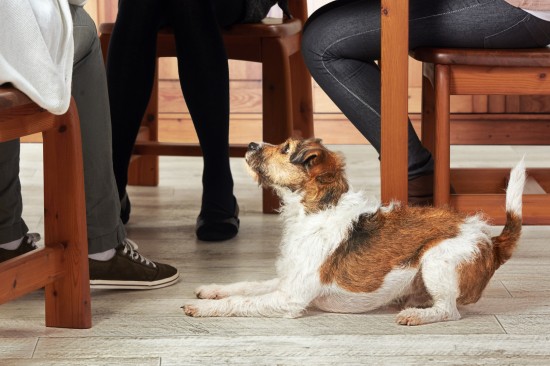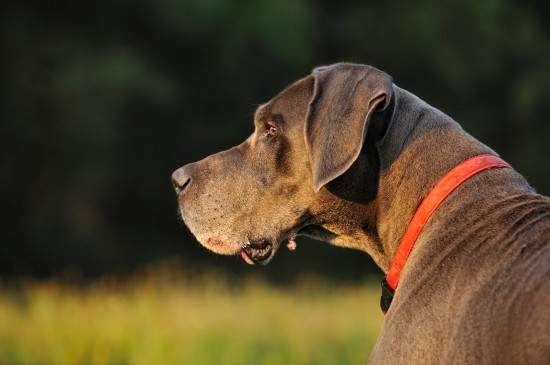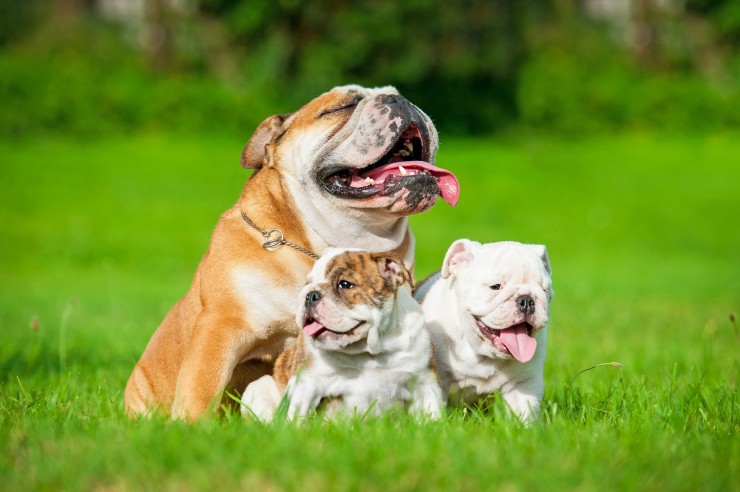
Loyalty, dedication, and love are traits shared in humans and dogs. This is part of what makes a dog man's best friend.
As your best friend, you want to keep you dog healthy, happy, and safe. The most common and well known form of exercising a dog is a walk with its owner.
While walking does help keep the dog happy, the winter weather can be very harsh and dangerous for your dog. Your dog's health is still worth the effort of a winter walk, as long as you take the necessary precautions to keep your dog safe.
Start by making sure the leash is firmly attached to your dog. The leash will keep the dog from running out in front of cars and from getting into things that he should not.
This will also allow you to set the pace of the walk so that neither you nor the dog is out in the cold too long. The leash will also give you peace of mind because you will know where your dog is at all times.
Despite the leash, your dog may occasionally escape from you. This is why collars and identifying tags are so important.
If your dog gets lost in the snow they may get frostbite or hypothermia. The sooner your dog can be returned because of his identification tags, the better.
Many of the sidewalks and roads are sprayed with salt throughout the winter to help reduce the amount of ice and snow on those surfaces. When you are done walking, make sure that there are no chunks of salt in your dog's feet.
In addition, be wary of areas that look like they may be icy. It can be harmful to both you and the dog if either of you fall down.
Before you begin your winter walk, check the weather channel. You will be able to find out the temperature and the wind chill factor from this channel.
Even if it is not actually too cold for winter, the wind chill can make it feel much colder. Cold can be even more of a danger to your dog than you because it is smaller.
This channel will also let you know about upcoming storms so that you can try to plan your walking schedule around them. You do not want to walk in the rain, sleet, snow, or hail if you do not have to.
Being caught in a blizzard would be even worse, and very dangerous. Take a minute or two to make sure your walk will be safe before leaving your home.
If you have a small dog, it is a very good idea to invest in a sweater. Dog coats and booties can be found at local pet stores.
Likewise, keep your pet's hair long so that they have a natural coat as well. Most small dogs are indoor pets who are not accustomed to the cold.
Make sure they are properly prepared to not only benefit from the walk, but survive it. As you walk along, you may want to let your pet play in a dog park for a while.
This is great, as long as your dog does not get too cold and you wipe their feet off after playing in the snow. Watch your dog's gait carefully.
If he starts to limp or hold up a paw, check his paw immediately. He may have salt stuck in it or he may simply be too cold.
When you are done with your walk, make sure that you wipe of your dog completely to remove salt and water. This will also help your dog warm up quickly.
To help your dog become accustomed to the cold, make sure that you take your dog for walks throughout the entire year. This will help your dog adjust to the changes in temperature and weather.
If your dog is still struggling, consider feeding them more throughout the winter. This will help him develop more fat to insulate him from the cold and more energy to ignore it.
New puppies are especially susceptible to the cold so be sure to be sensitive to their needs. If it is too cold for a walk, do not feel bad about skipping a day.
By skipping a day you are keeping your pet's best interests in mind. As they live a long and healthy life, there will be many cherished moments that you will experience with them.
 Does Your Dog Beg For Snacks ? It Could Be Why Theyre Piling On The Pounds
Does Your Dog Beg
Does Your Dog Beg For Snacks ? It Could Be Why Theyre Piling On The Pounds
Does Your Dog Beg
 Breeding Mice
Breeding Mice
Breeding Mice
Breeding Mice
 What Are Viral Papillomas In Dogs?
What Are Viral Pa
What Are Viral Papillomas In Dogs?
What Are Viral Pa
 Tabby Cat Colour And Pattern Genetics
Tabby Cat Colour
Tabby Cat Colour And Pattern Genetics
Tabby Cat Colour
 Five Universal Personality Traits Of The English Bulldog
Five Universal Pe
Five Universal Personality Traits Of The English Bulldog
Five Universal Pe
Copyright © 2005-2016 Pet Information All Rights Reserved
Contact us: www162date@outlook.com